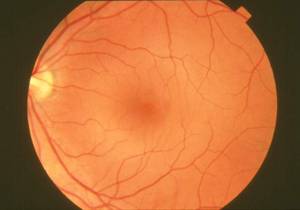In two blind-registered American patients, an injection of retinal pigment epithelium made from human embryonic  stem cells has partially restored vision.
stem cells has partially restored vision.
A case report in the Lancet medical journal describes the procedure carried out on the two volunteers who were both suffering with degenerative conditions (Stargardts Macular Dystrophy and age-related macular degeneration) that cause the cells in the retina to die off, leading to progressive sight loss and, as in these patients, eventually blindness.
This occurs primarily because a specialised cell layer called the retinal pigment epithelium, which nourishes the light-sensitive rod and cone photoreceptors in the eye, breaks down. Robbed of these supporting cells, the photoreceptors eventually follow suit and degenerate.
But if the retinal pigment epithelium can be replaced, it should be possible to rescue the rods and cones before they succumb, preventing vision loss.
But making new pigment epithelium is not trivial and is most easily achieved using embryonic stem cells which can be pursuaded to turn into the correct cell types by culturing them under the right conditions.
No one knows, however, how effective, or safe, cells produced in this way might be, although tests in laboratory animals genetically engineered to develop similar sight-loss syndromes to humans have been very encouraging.
To address this question, a US team of doctors and researchers, including Massachusetts-based stem cell scientist Robert Lanza from the company Advanced Cell Technology, used human embryonic stem cells to produce fifty thousand new retinal pigment epithelial cells that were injected into one of each of the patients' eyes.
Four months later, examination of the injected eyes showed improved pigmentation visible in their retinae, suggesting that the cells had remained viable, and both patients had objective improvements in their vision. One patient was even able to count the number of fingers held up by the examiner having previously been able to distinguish only gross movements of a hand being waved at them.
Critically, neither patient showed any ill effects as a result of the procedure nor any reduction in visual function, although both were given immunosuppression to prevent rejection of the foreign stem-cell derived tissue.For how long, if at all, they will need this though, isn't known.
According to Robert Lanza, "Despite the progressive nature of these conditions, the vision of both patients appears to have improved after transplantation of the cells. This is particularly important, since the ultimate goal of this therapy will be to treat patients earlier in the course of the disease where more significant results might be expected...
- Previous Self Distilling Vodka
- Next Spiders get the green light for jumping










Comments
Add a comment